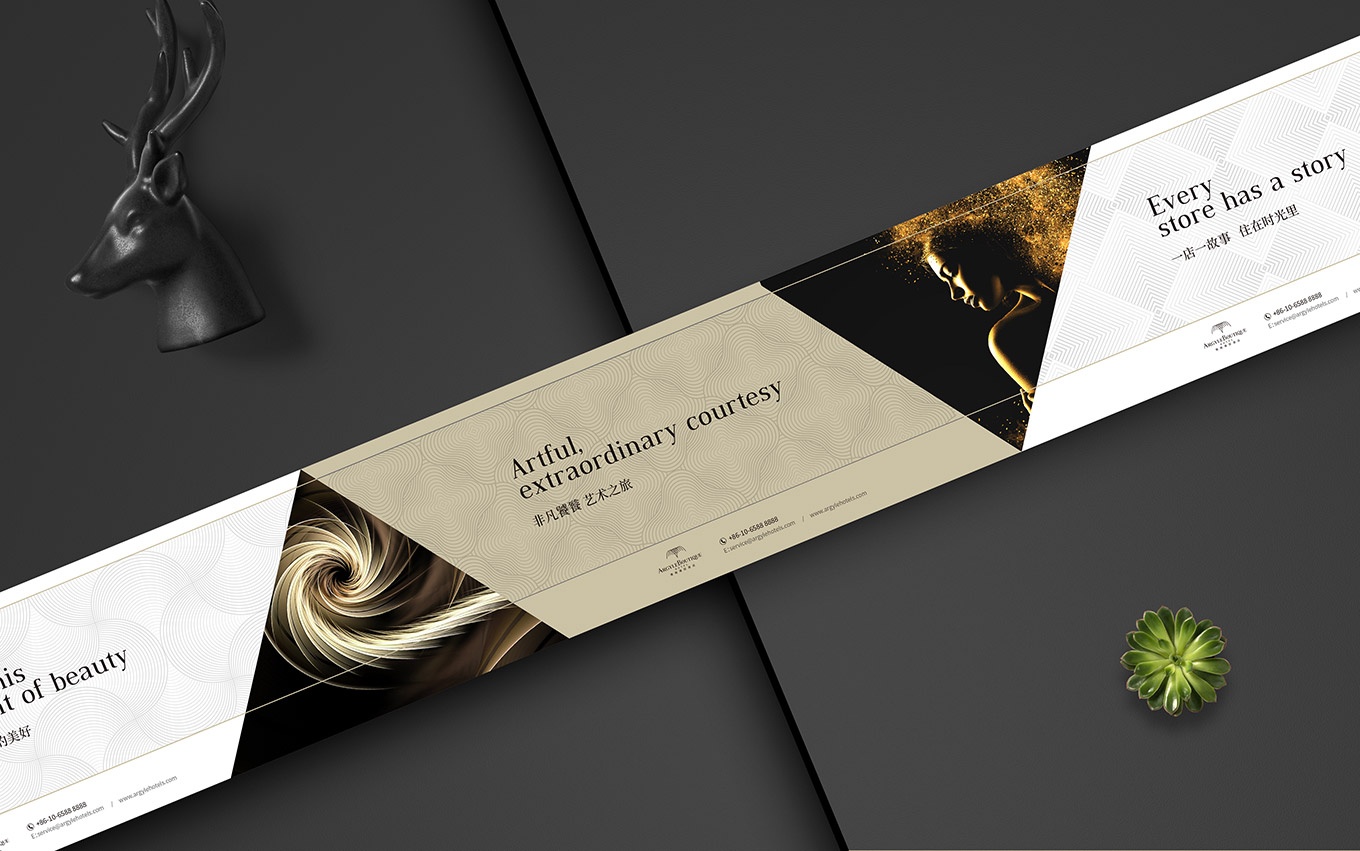地产行业一直是经济发展中的重要组成部分,其发展趋势受到多方面因素的影响。在当前的经济环境下,地产行业呈现出一些明显的趋势。,随着城市化进程的加速,城市人口规模不断扩大,对住房、商业和办公空间的需求也在不断增加。因此,未来地产行业将继续受益于城市化进程,尤其是在一、二线城市。
,随着科技的不断发展和应用,地产行业也在迎来数字化、智能化的时代。智慧城市、智能家居等概念逐渐成为现实,人工智能、大数据、物联网等技术的应用为地产行业带来了更多创新和可能性。未来,地产开发商将更加注重智能化、绿色化的建筑设计和运营管理,以满足市场需求和政府政策的要求。

配图为广州vi设计公司作品
地产VI设计是地产项目品牌形象的核心,它承载了项目的理念、文化和价值,是项目与外界进行沟通和传播的桥梁。一个成功的地产VI设计能够为项目树立良好的品牌形象,吸引目标客户群体,提升项目的市场竞争力。下面将介绍地产VI设计的要点。
1. 品牌识别系统
品牌识别系统是地产VI设计的核心,它包括了项目的标志、标志的运用规范以及相关的视觉元素。标志是项目品牌的象征,应该简洁明了、易于识别,并能够准确传达项目的核心理念。在品牌识别系统中,还需要规定标志的使用方式,包括标志的大小、颜色、间距等规范,以确保在各种场合下都能够保持品牌形象的一致性。
2. 色彩与字体
色彩和字体是地产VI设计中至关重要的元素,它们能够直接影响到人们对项目品牌的感知和认知。在选择色彩和字体时,需要考虑到项目的定位、目标客户群体以及所传达的情感和理念。色彩应该与项目的定位相符合,能够准确表达项目的特点和文化内涵;字体的选择要简洁明了,易于阅读,并且能够与项目的形象相匹配。
3. 视觉元素
除了标志、色彩和字体之外,视觉元素也是地产VI设计中不可或缺的一部分。视觉元素包括了项目的图片、图标、图形等,它们能够丰富品牌形象,提升视觉效果,增强品牌的辨识度。在选择视觉元素时,需要考虑到项目的特点和目标客户群体的喜好,确保视觉元素能够与品牌形象相呼应,达到相辅相成的效果。
4. 应用规范
地产VI设计不仅仅是一套静态的设计方案,更是一套动态的品牌管理系统。在实际应用中,需要根据不同的场景和媒介进行灵活的运用。因此,制定详细的应用规范至关重要,包括项目的标志使用方式、色彩和字体的搭配规则、视觉元素的运用方法等。只有严格遵守应用规范,才能够保证品牌形象的一致性,提升品牌的影响力和竞争力。
Real estate design plays a pivotal role in shaping both the products offered and the overall industry landscape. Here’s how:
1. Enhancing Aesthetic Appeal: The design of a property greatly influences its aesthetic appeal, attracting potential buyers or tenants. Thoughtfully crafted architecture, interior layouts, and landscaping can elevate the perceived value of a property, making it more desirable in the market.
2. Optimizing Functionality: Effective real estate design prioritizes functionality to meet the needs and preferences of end-users. Whether it's residential, commercial, or industrial spaces, well-designed properties enhance usability, comfort, and convenience, thus increasing their utility and value proposition.
3. Driving Economic Growth: The real estate industry serves as a significant economic driver, and design innovation fuels this growth. Iconic landmarks, mixed-use developments, and sustainable infrastructure not only enhance the urban landscape but also stimulate economic activity by attracting investments, fostering tourism, and creating employment opportunities.
4. Promoting Sustainability: With growing environmental concerns, sustainable real estate design has become imperative. Green building practices, energy-efficient technologies, and eco-friendly materials not only reduce environmental impact but also lower operational costs and enhance long-term value. Sustainable design aligns with evolving consumer preferences and regulatory standards, thus future-proofing properties against obsolescence.

业务咨询 付小姐

业务咨询 舒先生

总监微信咨询 付小姐